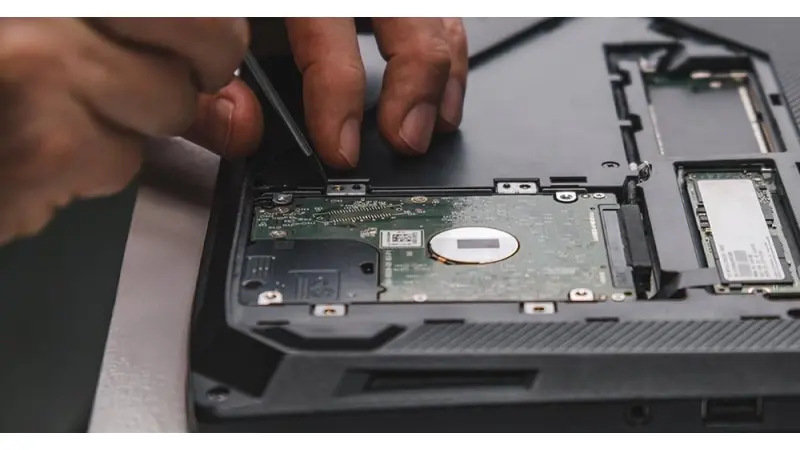Intel's Modular Concept: A Rethink in Laptop Design
Intel's modular laptop design could revolutionize upgrades and reduce e-waste, following past efforts by Dell and IBM.

While components in most desktop computers can be easily — well, relatively easily — replaced, laptops tend to be far more difficult to upgrade or replace. Intel is advocating for a modular concept that could make upgrading your laptop less expensive than buying a new one, while also substantially reducing e-waste.
A Brief History of Modular PCs
A few years ago, Dell introduced Concept Luna, a laptop design featuring modular components that could be upgraded through a robotic upgrade station at a retailer. Similar to a vending machine, the system allowed a robot to handle the upgrade process.
Let’s talk about modular computers that started with the IBM PCjr, moved to an IBM modular computer concept, the Dell effort, and finally, the Intel concept this week.
The IBM PCjr
The IBM PCjr was a revolutionary desktop design based on the ability to update the product easily. Components could be upgraded by purchasing and adding modules, similar to game cartridges. The design was initially promising, but it was crippled to prevent it from competing with more expensive systems, ultimately leading to its failure.
In contrast, when Apple realized customers would likely prefer a phone with the iPod’s functionality, they leaned into the trend, resulting in the successful iPhone. If IBM had adopted a similar strategy with the PCjr, it might have retained its leadership in the PC market.
The Archistrat 4s Server
The next modular effort, the Archistrat 4s server from a company with ex-IBM staff called Panda Project, allowed components to be easily replaced. Despite its innovative design, financial mismanagement led to the company’s downfall.
IBM MetaPad and Antelope Technologies
IBM's MetaPad came next, offering a core computing unit that could fit into various docks for flexibility. However, due to its costs and low power, it failed to gain traction. Antelope Technologies pursued a similar concept but was unable to produce the necessary docks or generate high sales volume.
Dell’s Concept Luna
More recently, Dell developed Concept Luna, which used a robotic upgrade station for fast, easy component swaps, drastically reducing e-waste and costs. Despite its potential, Dell did not bring this concept to market.
Intel’s New Modular Laptop and Desktop Vision
Building on the foundation set by previous modular concepts, Intel’s approach primarily targets reducing e-waste and decreasing lifecycle costs. This could also lower upgrade costs and improve repairability, making PCs more customizable.
Intel is also revisiting the Panda Project's passive backplane concept for desktops. This would make motherboard upgrades easier and quicker, potentially increasing demand for new components and driving innovation in PC designs.
Wrapping Up
After a challenging year, Intel’s modular computing initiative could rejuvenate its innovation drive. Despite setbacks, Intel continues to push the envelope on PC designs, proving it's not done changing the future.
Tech Product of the Week: HP EliteBook G1a 14-inch Notebook
The latest in this innovative category is the HP EliteBook G1a 14-inch, a powerful laptop tailored for tech professionals. It offers superb video conferencing enhancements and strong AI features, performing exceptionally well thanks to AMD’s latest processor.
The EliteBook G1a starts at under $2,200, offering options like a touch OLED display and various memory configurations. It combines powerful performance with eco-friendly design, and robust security, making it a standout product in its category.



